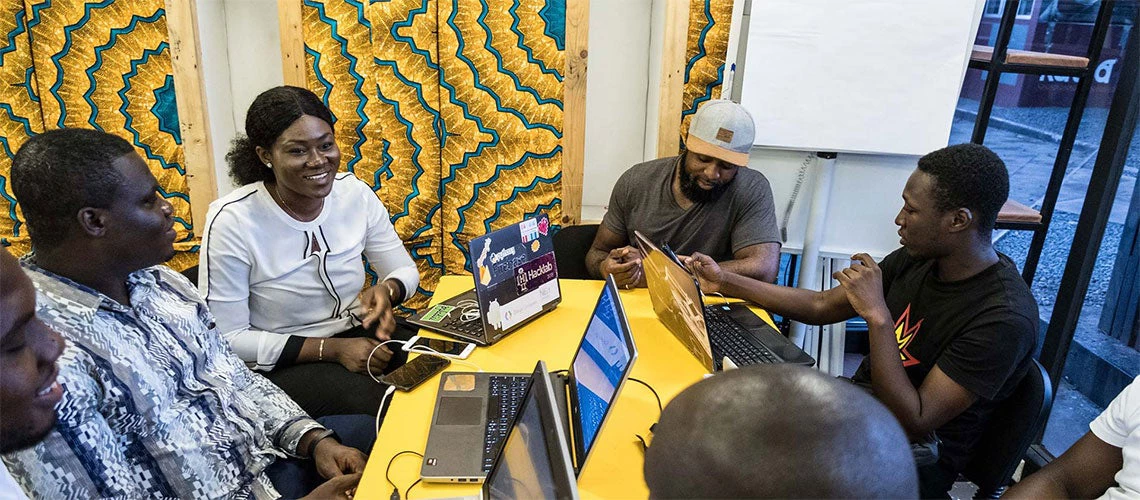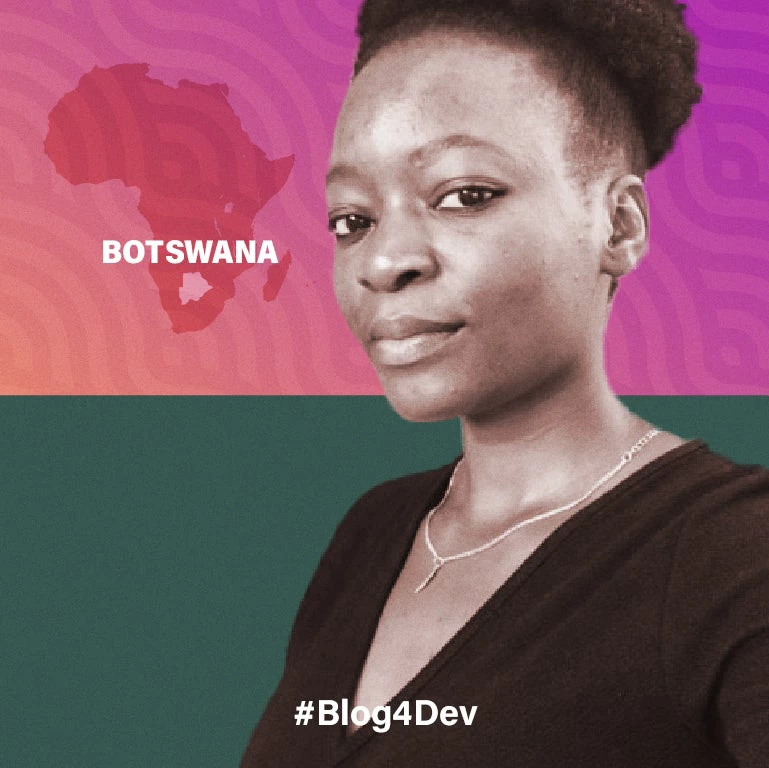 Digital education can prepare the next generation of Africans for career opportunities, says World Bank Blog4Dev winner Esther Modise.
Digital education can prepare the next generation of Africans for career opportunities, says World Bank Blog4Dev winner Esther Modise.
SELEBI-PHIKWE, Botswana—I do a lot with my phone—conducing financial transactions, reading books, and especially lately, watching a young comedian’s videos on social media. Nigerian-born comedian Emmanuella Samuel is just 10 years old, but she’s already an Internet sensation well-known across the continent, and is turning her talent into a lucrative career. This is one of the many success stories of people who transformed their creativity into livelihoods through online platforms, and entertainment is only the beginning of digital opportunities that young people across Africa can capture to grow a business online.
How we design and deliver our education system and curriculum could allow more young people to capture the digital opportunity. I know this firsthand. After finishing my Geophysics course at Imperial College London in 2018, I started tutoring high school students part-time. It gave me insight into how far we in Botswana have come in incorporating digital learning into our education system. There have been some significant developments and innovative uses of digital tools compared to when I was in high school in 2011.

Esther Modise. Photo courtesy of the author.
One example: It is the norm today for students to have personal devices that give them online access to study materials. Many students in Botswana do not have broadband Internet access, but more can afford social media bundles, which allows them to use social media platforms at lower data costs. Students can send their work, receive material, and have discussions via WhatsApp—a powerful way to engage outside of the physical classroom. Applications like Blackboard and Receipts have been fundamental in delivering more organized tutorials and effectively tracking income and expenditure.
But there is room for major improvement. According to the International Labour Organisation (ILO), the percentage of youth aged 15 to 25 not employed, or receiving education or training in Africa, was 20.7 percent in 2019. This figure will only escalate due to the COVID-19 pandemic. As a region, we should increase our online footprint and tap into the alternative opportunities offered by the digital era. Traditional jobs are changing and will continue to evolve; hence the need to be malleable and receptive to new careers. It also means we need new education models that will prepare the next generation to capitalize on the digital opportunities.
COVID-19 has highlighted the digital divide here. A study from ILO found that 65 percent of youth in high-income countries were taught classes via video-lectures following lockdowns and school closures, but only 18 percent in low-income countries were able to keep studying online. Additionally, at least 121 million schoolchildren in sub-Saharan Africa were unable to access remote learning when COVID-19 shuttered their schools, according to UNICEF.
For Africa to fully embrace the digital economy, a collective effort from the government, private sector, and citizens is imperative. It is time to restructure our education system to a digitally adaptable model. Coding and programming should be added to the core curriculum taught in schools from the very early grades, with a provision of computers and other technology devices to schools to bridge the gap between developed and developing countries. This could help produce global citizens who are as competent as any of their peers around the world.
My own experience showed the need to bolster our tech education in the region. When I studied Geophysics at Imperial College London, I saw that the application of technology in Botswana and the UK was radically different. The most challenging parts of my studies were the core modules that were heavily based on understanding specific programming languages. This is why early digital literacy is so important: it makes the transition easier for people going from high school to tertiary-education institutions and ultimately to digital careers.
In Africa, government schools are especially under-resourced, and the situation is dire for schools in rural areas. I attended a government school and had a few introductory computer classes because we had some computers. That was far from enough. To facilitate the transition to a more tech-enabled education system, collaboration between governments and mobile network providers in building Internet infrastructure and extending coverage to remote areas will help with affordability—especially for young people.
As young people, we should proactively assimilate technology into our creative projects and businesses, too. The youth are Africa’s greatest pool of talent and innovation. Social media has opened the space to showcase skills on the global stage. Now we must go further to capture the digital opportunity. It is through creativity that we as a people will accurately represent and celebrate our diverse stories, art, music, cuisine, fashion, and entertainment. Our incorporation of digital tools should span beyond artistic expressions to creation of mobile applications, security, health, and sports innovations.
It’s up to us to continue equipping ourselves with the knowledge to use digital tools to improve our lives and use our creativity to create employment. Being digitally savvy and open-minded will position us for opportunities that did not exist years ago. If 10-year-old comedian Emmanuella Samuel has figured it out, it can surely be done in other areas.
Esther Modise is a geophysics graduate who is passionate about connecting the continent and providing an inclusive, relevant education to all with the intention of preparing students for the world we live in today. She is a World Bank 2020 Blog4Dev winner. She can be reached at esthermodise12@gmail.com.
First published on IFC Insights


Join the Conversation